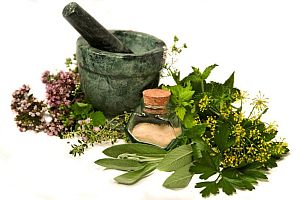Medicine has been around almost as long as illness; it’s natural for us to want to find a way to feel better. Unfortunately, history is littered with horror stories about early medicine, like allowing cuts to become infected because our ancestors thought pus was a sign of healing, or packing burns with fresh cow manure to prevent scarring.
While there are numerous missteps along the path toward modern medicine, one form of treatment seemed to have had it correct from the start – ancient Mexican medicine. The first ones to notice the benefits of ancient Mexican medicine, aside from Mexicans (Aztecs,) were the Europeans who came with the intent to conquer.
According to research compiled by Carlos G. Musso, from the Nephrology Department of the Hospital Italiano de Buenos Aires, Argentina, Europeans quickly learned the Aztecs were far more advanced than they were in a number of areas, including medicine. But why was ancient Mexican medicine so effective despite the fact it was based primarily on beliefs of magic and illnesses inflicted by supernatural forces?
The Cornerstones of Ancient Mexican Medicine
 |
Dr. Musso’s investigation on ancient Mexican medicine found it was effective because it operated on some basic principles still used in medicine today. For example, the Aztecs had an intricate knowledge of human anatomy, one far more complex that what is currently used today.
Musso indicates ancient Mexican medicine had more than 4,000 medical terms for structures within the human body – many more than what is used in modern medicine. While much of this knowledge came from human sacrifice, it gave the Aztecs a working knowledge of the body and how it functioned.
Another reason why ancient Mexican medicine was so effective was because it relied heavily on rules of hygiene. Unlike many other ancient cultures, the Aztecs knew the importance of daily bathing, and they even held weekly public steam baths as a medical and social event.
In today’s world, personal hygiene is one of the basic methods of disease prevention, and the World Health Organization (WHO) indicates a lack of sanitation and hygiene is a primary cause of illness in many parts of the world. But aside from being cleaner and more aware of their bodies than many other cultures, Aztecs placed a great importance on the health of mothers and children.
After marriage, every woman was instructed on childbirth and raising a family by a midwife, and breastfeeding was a common practice with children until the age of 3 years.
While this was likely due to the absence of other adequate milk sources, modern knowledge shows this obligatory breastfeeding likely had a number of benefits, according to the Office on Women’s Health. These benefits included improved immunity from the mother’s antibodies, balanced nutrition, reduction of common childhood illnesses (like ear infections), and protection from contaminated water supplies.
These factors in ancient Mexican medicine were combined with another beneficial factor which pulled everything together – a long, in-depth tradition of medical practice. Within the Aztec community, physicians came from a family with a history of physicians, therefore the medical knowledge available was extensive.
Early records indicate the Aztecs had access to more than 300 medicinal herbs, and they commonly made pills out of these plant sources by combining them with animal fats and resins.
Because ancient Mexican medicine relied heavily on astronomy too, medications were administered in conjunction with moon cycles – 14 or 28 days. This is very similar to the protocol used by physicians today.


